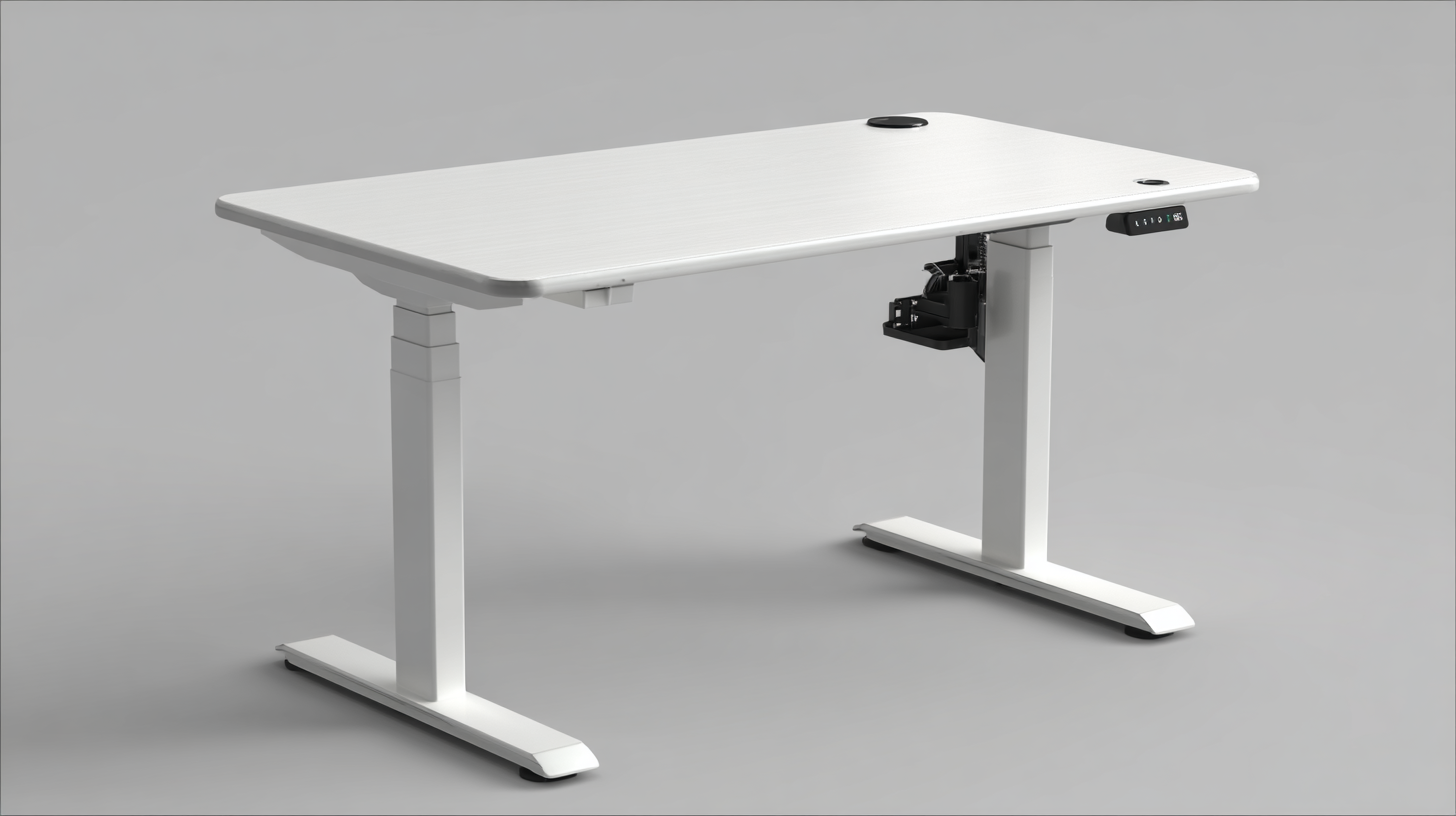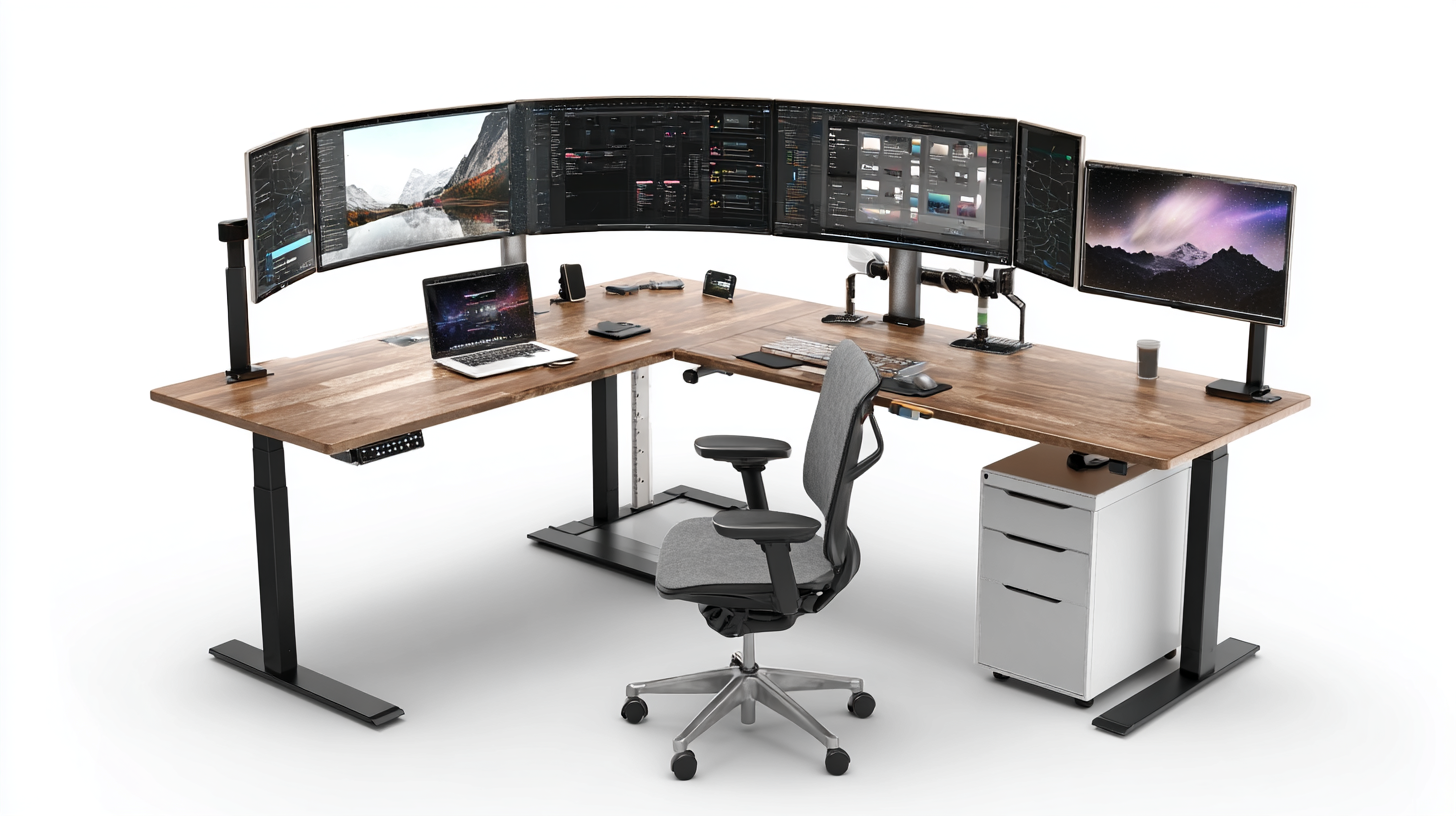In today's fast-paced work environment, the significance of an ergonomic computer desk cannot be overstated. Research from the American Chiropractic Association indicates that nearly 80% of adults experience back pain at some point in their lives, often exacerbated by prolonged sitting and inadequate workstation setups. A well-designed computer desk not only promotes better posture but also enhances productivity, with studies showing that workers can increase their output by up to 15% when working in ergonomically optimized spaces. Moreover, according to the Global Ergonomics Market Report, the demand for ergonomic office furniture, including computer desks, is projected to grow significantly, reaching a market value of over $63 billion by 2028. By investing in the right ergonomic computer desk, individuals can create a healthier, more efficient workspace tailored to their needs, ultimately leading to improved well-being and work performance.

When choosing an ergonomic computer desk, several key features can significantly enhance productivity. Adjustable height settings are crucial, as they allow users to alternate between sitting and standing, promoting better posture and reducing fatigue. Additionally, features such as built-in cable management systems help maintain a clutter-free workspace, which can improve focus and efficiency.
Tips for selecting the right ergonomic desk include assessing your workspace size to ensure it fits comfortably, and opting for desks that offer a range of customizable features. Look for models with memory settings that allow you to save preferred heights for quick adjustments.
Furthermore, incorporating smart technology in ergonomic desks can lead to a more efficient work environment. For example, IoT-enabled desks can track sitting times and remind users to take breaks. This promotes not only physical well-being but also mental clarity, leading to improved overall productivity in the workplace. Choosing the right ergonomic desk can thus create a healthier, more focused working atmosphere.

Recent industry research has highlighted the critical role that desk height and adjustability play in enhancing work efficiency. According to a study by the Ergonomics Society, employees using adjustable desks reported a 15% increase in productivity compared to those using static desks. This improvement can be attributed to the ability to modify desk height, allowing users to comfortably switch between sitting and standing positions. With more than 60% of workers experiencing discomfort while seated for prolonged periods, adjustable desks provide a practical solution to mitigate fatigue and promote a more dynamic work environment.
Furthermore, a report from the Center for Workplace Health indicates that ergonomic setups can reduce musculoskeletal disorders by up to 40%. This underscores the importance of personalized workspace configurations, as individuals have varying body types and preferences. By investing in ergonomic desks that offer height adjustability, companies can create a healthier workspace that not only increases productivity but also fosters employee well-being. A well-designed desk contributes significantly to job satisfaction and can lead to lower absenteeism rates, making it a vital aspect of organizational productivity strategies.
The design of a computer desk plays a crucial role in promoting healthy posture and comfort, which are essential for maintaining productivity in the modern workspace. A well-thought-out ergonomic desk setup encourages users to sit in a neutral position where the body is aligned, reducing the strain on the back, neck, and wrists. Features such as adjustable height, a spacious work surface, and supportive features can significantly enhance the overall comfort level, allowing for extended periods of focused work without discomfort.
Moreover, the incorporation of ergonomic principles into desk design fosters a positive work environment. Desks that facilitate movement, such as standing desks or those that allow for a seated-to-standing transition, encourage users to change positions throughout the day. This dynamic approach not only alleviates the risks associated with prolonged sitting but also boosts overall energy levels and mental clarity. By considering the role of desk design in promoting healthy posture, companies can invest in furniture that supports their employees' well-being and productivity, ultimately leading to improved performance and workplace satisfaction.
When selecting an ergonomic computer desk, the materials used in its construction play a crucial role in both durability and functionality. According to a recent industry report from the Global Ergonomics Association, desks made from high-quality materials such as solid wood or steel not only provide better stability but also enhance the user's overall comfort during long working hours. Solid wood desks, for instance, have been shown to reduce vibrations, which can be beneficial in maintaining focus and productivity. Research indicates that users working on sturdy desks experience a 15% improvement in task performance compared to those using poorer quality options.
Moreover, the surface material of ergonomic desks can significantly impact health and efficiency. A study published in the Journal of Workplace Psychology revealed that desks with a high-pressure laminate finish are preferred for their scratch resistance and easy maintenance, contributing to a cleaner and more organized workspace. Additionally, these materials can help regulate temperature and prevent excessive sweating during prolonged use. In contrast, cheaper materials like particleboard can lead to off-gassing and may contribute to adverse health effects over time, potentially diminishing productivity. Thus, investing in quality materials is essential for promoting not just durability but also a healthier work environment.
| Desk Type | Material | Adjustable Height (inches) | Weight Capacity (lbs) | Price Range ($) | User Rating (out of 5) |
|---|---|---|---|---|---|
| Standing Desk | Bamboo | 28 - 48 | 300 | 400 - 600 | 4.5 |
| Height Adjustable Desk | Solid Wood | 30 - 50 | 350 | 500 - 800 | 4.6 |
| L-Shaped Desk | Particle Board | 29 - 47 | 400 | 300 - 500 | 4.2 |
| Floating Desk | Glass | 29 | 200 | 150 - 300 | 4.0 |
| Sit-Stand Desk Converter | Metal | 24 - 48 | 200 | 100 - 250 | 4.3 |
In recent research focusing on ergonomic computer desks, user feedback has emerged as a critical element in assessing their performance and impact on productivity. Users consistently highlight the importance of adjustable features, such as height and angle, which allow for a personalized workspace that accommodates various body types and working styles. Desks that offer smooth transitions between sitting and standing positions are particularly praised for their ability to reduce fatigue and enhance concentration throughout the workday.

Industry insights further reinforce these sentiments, revealing correlations between ergonomic design and improved employee satisfaction. Companies that prioritize ergonomic solutions often report lower rates of workplace injury and higher overall productivity. Additionally, the integration of cable management systems and designated storage spaces has been noted to minimize distractions, allowing for a more streamlined and efficient workflow. As businesses continue to adapt to hybrid work models, investing in high-quality ergonomic desks has become crucial in fostering a healthy and productive workspace.






